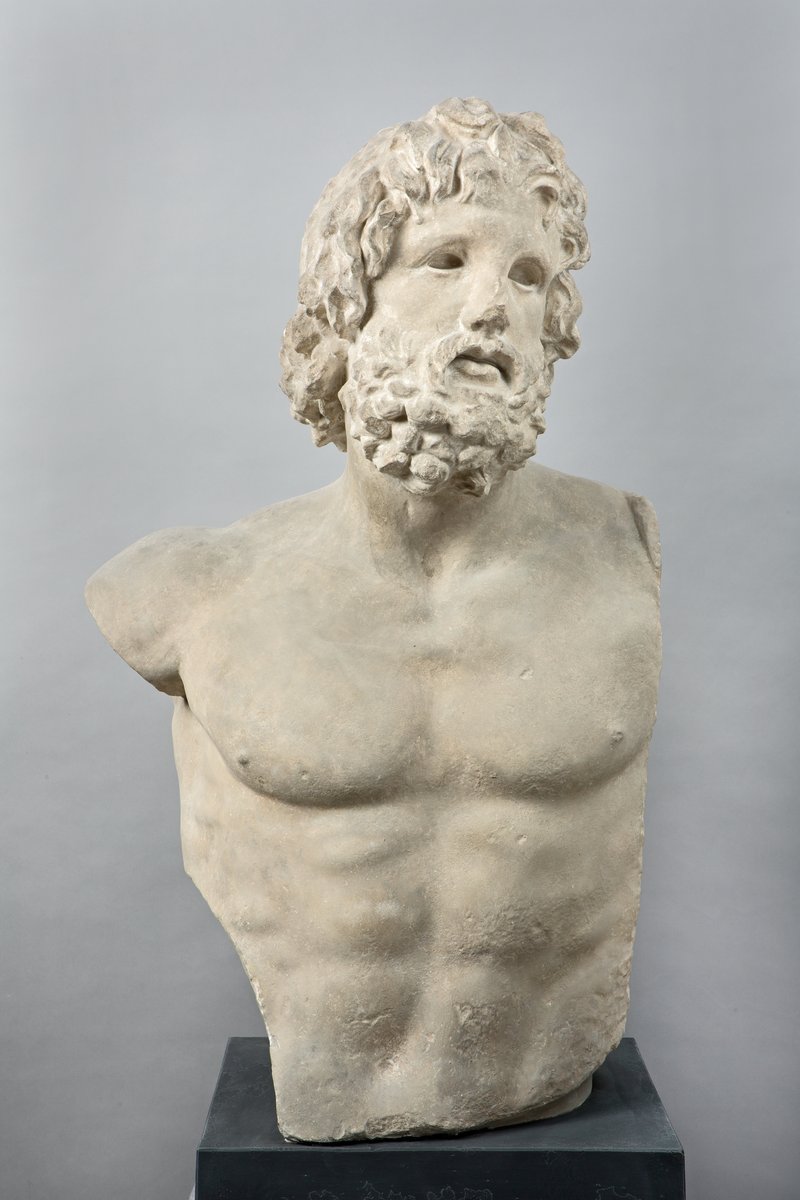
Asclepius
Classical Antiquites - Plaster casts
| Készítés ideje | early 20th century (plaster cast), 120-140 AD (original) |
|---|---|
| Tárgytípus | plaster cast |
| Anyag, technika | plaster |
| Méret | 59 x 60 x 37 cm |
| Leltári szám | Ag.394 |
| Gyűjtemény | Classical Antiquites - Plaster casts |
| Kiállítva | Star Fortress (Komárom), Heroes, Gods: The Classical Greek Ideal of the Young Male Figure, Gallery III |
Only a small fragment suggests that the bust represents Hermes, the winged god: the stump at the right side of the head is a trace of the wing. The face evokes the statues of Polykleitos, while the treatment of the hair is typical of Roman portraits of the 120s—140s AD. The bust is thus an adaptation, a variant of the Polykleitan theme. The statue was found in Hadrian’s villa in Tivoli. Hadrian adored Greek culture, which earned him the nickname Graeculus (‘Greekling’). In the eighteenth century, a groove was carved around the head to receive a diadem: the bust was transformed into the statue of a victorious athlete.
Hekler, Antal, Az antik gipszgyűjtemény I-II., Budapest, 1919-1920, 1923.
A folyó kutatások miatt a műtárgyra vonatkozó információk változhatnak.